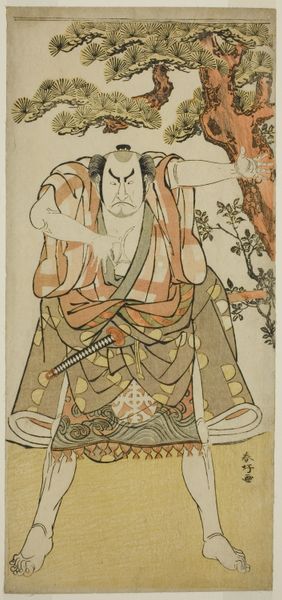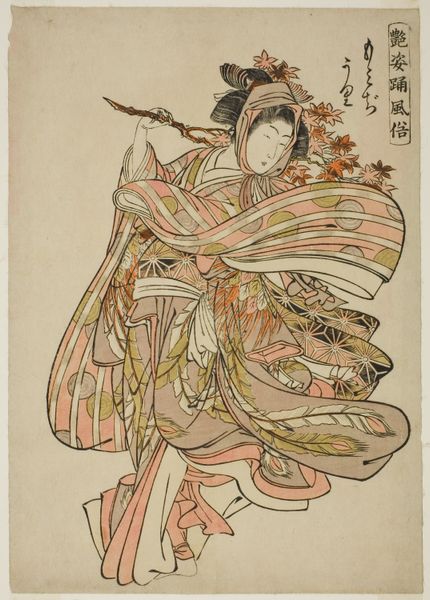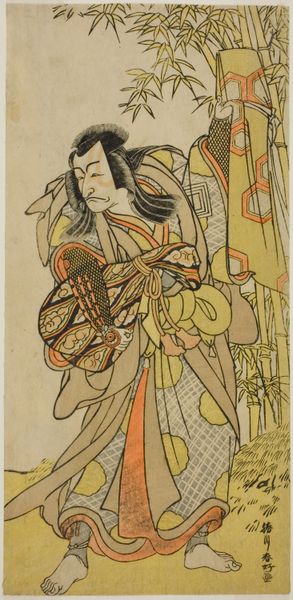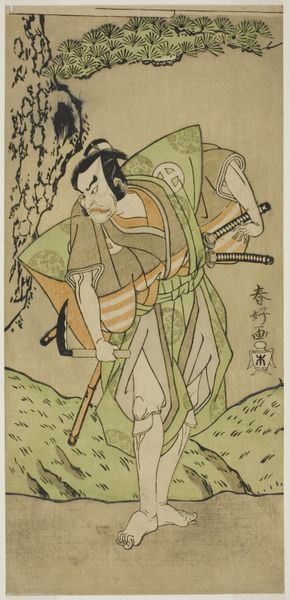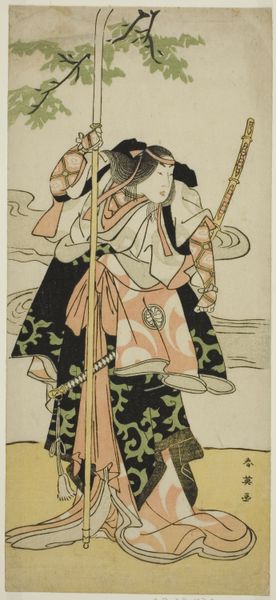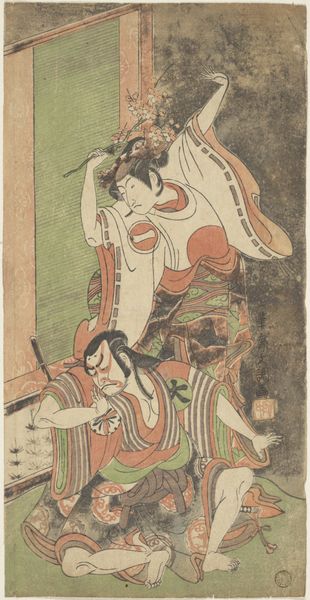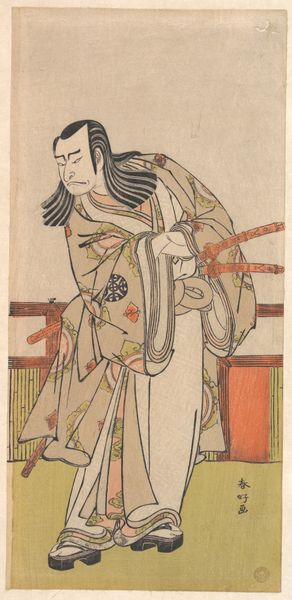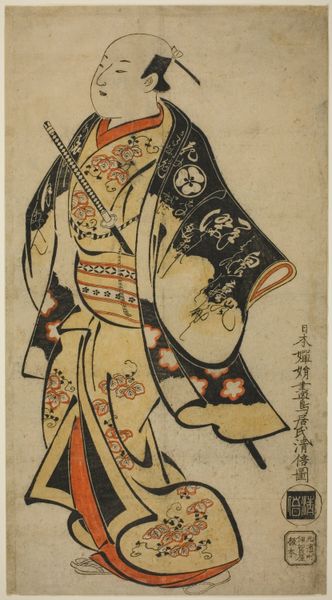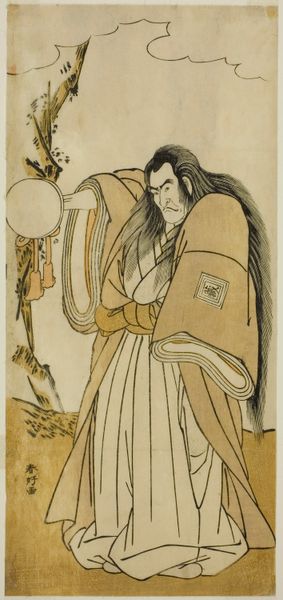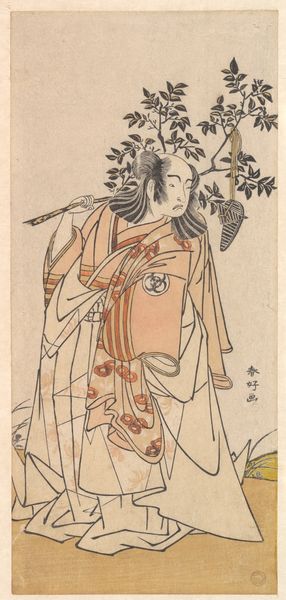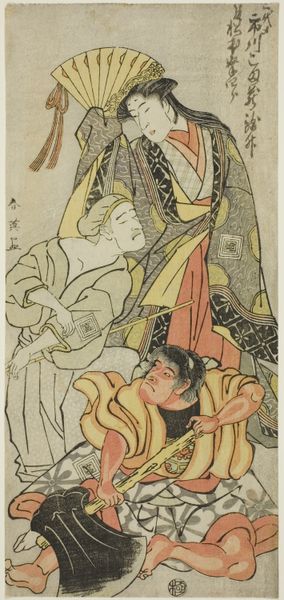
The Actor Ichikawa Danjuro V as Kazusa no Akushichibyoe Kagekiyo in the Play Edo no Hana Mimasu Soga, Performed at the Nakamura Theater in the Third Month, 1783 c. 1783
0:00
0:00
print, woodblock-print
#
portrait
#
ink painting
# print
#
asian-art
#
ukiyo-e
#
woodblock-print
Dimensions: 30.5 × 14.2 cm (12 × 5 9/16 in.)
Copyright: Public Domain
Curator: Before us, we have "The Actor Ichikawa Danjuro V as Kazusa no Akushichibyoe Kagekiyo in the Play Edo no Hana Mimasu Soga," a woodblock print made around 1783 by Katsukawa Shunsho. The location of the performance was the Nakamura Theater. Editor: The initial feeling is powerful; a monumental presence in a relatively constrained space. The textural variety achieved in this ukiyo-e is noteworthy, moving from the solid grounding to the intricately detailed robe. Curator: Yes, the geometric patterns on the robes juxtapose against the actor's determined face. His severe makeup speaks to the highly stylized Kabuki tradition. One finds the repeated lozenge shapes, signifying rank, and the formalized eyebrows, meant to instill terror. The heavy, angular folds of the clothing enhance the two-dimensionality of the medium. Editor: The actor, as the betrayed warrior Kagekiyo, holds a torn banner. Banners represented an army or faction. It tells a poignant tale of cultural memory. Kagekiyo represents a historical figure, a fallen hero of the Genpei War who embodies stoicism and fierce loyalty. His image taps into deep-seated feelings of national identity and martial virtue. Curator: Consider how the materiality of the print further affects our interpretation. The relatively coarse texture of the wood grain adds a tactile dimension that contrasts sharply with the fineness of the lines used to depict the facial features. In a semiotic sense, the tension of these combined elements—roughness against meticulousness—reveals how constructed oppositions create the aesthetic and meaning. Editor: Yes, and how the image reverberates with cultural significance. Kagekiyo's figure, repeatedly represented through the centuries, speaks to the continuous reimagining of heroes. The very act of representing the actor embodies the shifting relationship between art, the individual, and collective historical narrative. It brings forth layered notions of justice and suffering, mirrored over time. Curator: Viewing this print through different lenses provides us unique viewpoints. Through formal study, we understand artistic intention by studying line, color and form. By analyzing historical undercurrents and iconographic context, we perceive additional elements of cultural memory imbedded within it. Editor: Absolutely, the work serves as a testament to enduring cultural symbols—visual stories passed on through generations. It echoes historical events and brings them into a current frame for reflection.
Comments
No comments
Be the first to comment and join the conversation on the ultimate creative platform.
